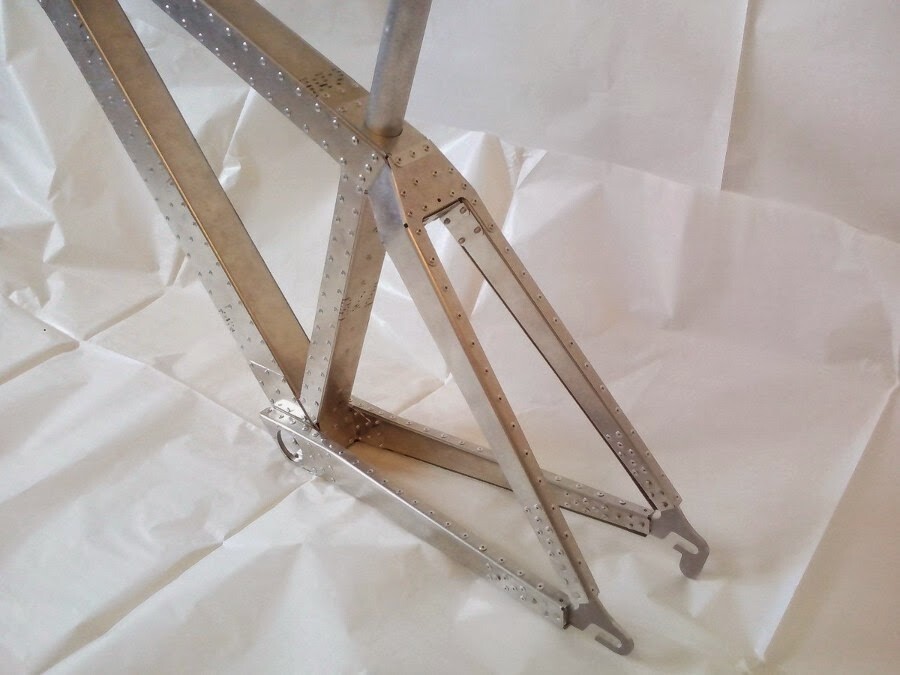Italy's Albaviation is in the business of manufacturing small aircraft, along with parts for them. So, what happens when the company's TrixonLab division decides to build a hardtail mountain bike? Well, with its riveted sheet aluminum construction, the Zero's frame is pretty reminiscent of a retro airplane. According to its creators, however, there's more to the design than just unique looks.
The Zero is the first model in TrixonLab's planned Voiroo Bike line. Other models in development include road and urban bikes.
Using a CNC (computer numerical control) system, the main components of the frame are first cut from sheets of 0.6 to 0.8-mm aluminum – some smaller bits are made from thicker sheets. The resulting flat pieces of metal are subsequently folded and molded into the desired shapes, then riveted and glued into place.
The company's Giorgio Mannozzi told us that this design, commonly used in the aeronautical field, offers a good weight-to-rigidity ratio. "The box structure allows us to have a monocoque, a single structure without specific weaknesses," he said. "On an equal weight (tube structure vs. box structure), the box structure allows us to have a greater rigidity and especially robustness."
Additionally, there are no welds in the frame, which are a structurally weak point on traditional tube-based bikes.

TrixonLab plans to build the Zero to order, and will offer it as a frame only, or in one of two complete bike builds. The frame weighs 1.65 kg (3.6 lb), and will sell for €460 (about US$590) on its own. A full bike featuring a Shimano XT groupset, Rock Shox Recon Gold TK suspension fork and XT 27.5-inch wheels will go for €2,490 ($3,194), while a bike equipped with Shimano Deore, Rock Shox XC 30 TK fork and Mavic Crossride 27.5-inch wheels will set buyers back €1,690 ($2,168).
California-based Ronin Bicycle Works also makes bikes from sheet aluminum, although it recently didn't meet the funding goal in a Kickstarter campaign aimed at taking them into large-scale production.
Source: TrixonLab







